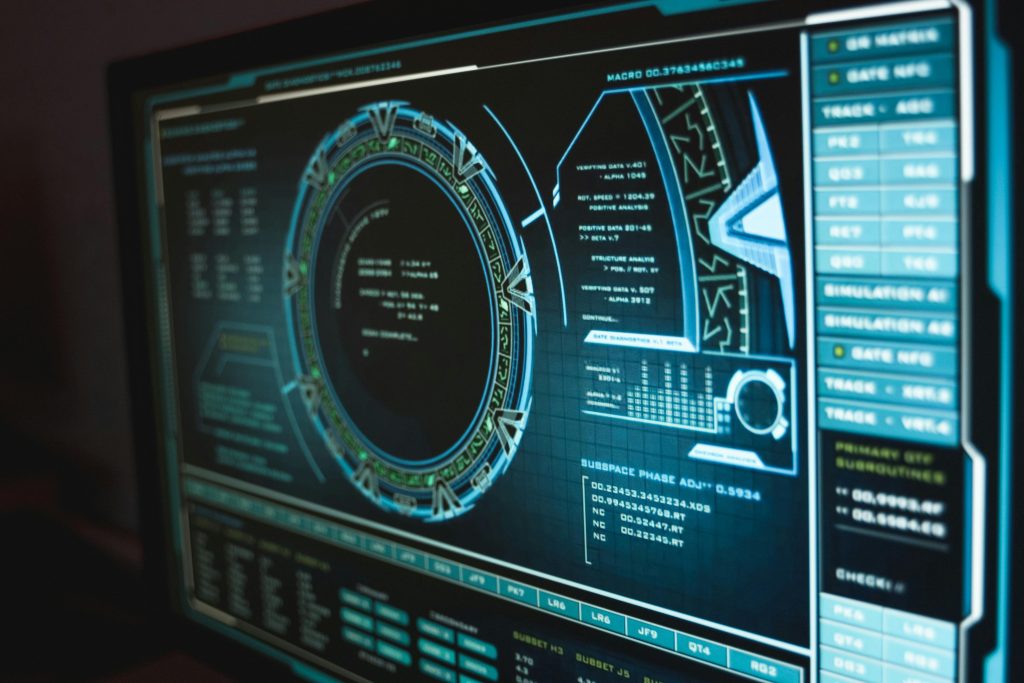Explore Artificial Intelligence (AI), the game-changer in the battleground of cyber security. This post by Creative Networks explains AI’s pivotal role, exploring its current expertise and looking into its vast potential in safeguarding our digital frontiers.
From enhancing threat detection and prevention to enabling real-time responses and predictive analytics, AI is transforming how we defend against cyber threats. Join us as we explore the expertise AI brings to the table and its future impact on creating a secure digital landscape.

The Advent of AI in Cyber Security
The journey of Artificial Intelligence (AI) in cyber security is a story of transformation. AI has quickly become a key player in the fight against cybercrimes. This shift wasn’t just about embracing new tech, it was a necessary response to the growing complexity of cyber threats and the overwhelming amount of data the world now handles.
The real spark of AI in cyber security lies in its learning ability. Unlike static security systems, AI models learn and improve over time. They get better at predicting and identifying threats, making them essential tools for modern cyber defence strategies.
In short, AI’s role in cyber security has evolved from a promising concept to an essential defence mechanism. It’s not just about dealing with the data flood or complex threats, it’s about transforming how we protect our digital worlds, making it a crucial link in maintaining our cyber safety.

AI Revolutionising Cyber Security
In today’s digital age, cyber threats are evolving at an unprecedented rate, challenging traditional security measures. However, the integration of Artificial Intelligence (AI) into cyber security is revolutionizing how we protect digital environments.
Here’s a comprehensive look at how AI is transforming cyber security with its intelligent, rapid, and efficient tools.
Threat Detection and Analysis
AI acts as an unparalleled super-detective, meticulously analyzing vast amounts of data to identify potential threats that might elude human detection. Traditional methods often fall short due to the sheer volume and complexity of data.
In contrast, AI-powered systems use advanced algorithms and machine learning to detect anomalies and patterns that indicate malicious activity. This continuous, real-time surveillance ensures that no potential threat goes unnoticed, providing a significant boost to overall security posture.
Phishing and Fraud Prevention
Phishing attacks and online fraud are among the most common cyber threats, often relying on social engineering tactics to deceive users. AI excels in identifying these deceptive tactics by scrutinizing email contents, URLs, and website behaviors.
By comparing these elements against known phishing patterns and behaviors, AI can flag suspicious activities with high accuracy. This proactive approach acts as a digital guardian, effectively safeguarding users from falling victim to scams and fraudulent activities.
Vulnerability Management
One of AI’s most significant contributions to cyber security is its predictive capability. AI systems analyze historical data and current threat landscapes to forecast potential security vulnerabilities.
This predictive analysis allows organizations to identify and address weaknesses before they can be exploited by attackers. Much like a weather forecast for cyber threats, AI helps security teams anticipate and prepare for possible attacks, significantly enhancing their defensive strategies.
Automated Response Systems
Speed is crucial in cyber security. When a threat is detected, AI doesn’t just issue alerts; it initiates automated response actions to neutralize the threat immediately. These responses can include isolating affected systems, blocking malicious IP addresses, or deploying patches to vulnerable software.
This swift, automated action minimizes the window of opportunity for attackers, reducing the potential impact of a breach. It’s akin to having a digital firefighter on standby, ready to tackle fires before they spread, ensuring a quick and effective containment of threats.

Benefits of AI in Cyber Security
AI is revolutionizing cyber security by providing enhanced protection and efficiency. Here’s a deeper look into its key benefits:
Enhanced Accuracy and Efficiency
AI significantly reduces reliance on manual processes that are often prone to errors and inefficiencies. By automating threat detection and response, AI ensures a higher level of precision and operational efficiency. This automation minimizes human error, providing more accurate identification of threats and quicker resolution.
Scalability
AI systems are designed to handle vast amounts of data, making them ideal for businesses experiencing growth or managing complex IT environments. These systems can scale effortlessly to meet increasing demands, ensuring robust security measures are maintained without compromising performance.
Real-Time Monitoring
Continuous, real-time monitoring allows organizations to stay ahead of potential threats, shifting the approach from reactive to proactive. AI-driven systems can instantly detect and respond to suspicious activities, reducing the window of vulnerability and enhancing overall security posture.
Cost-Effectiveness
Automating routine security tasks reduces the need for extensive human resources, thereby lowering operational costs. AI enables organizations to maintain high security standards without incurring the expenses associated with large security teams. This cost-efficiency makes advanced cyber security accessible to businesses of all sizes.
Adaptability
AI systems possess the ability to learn and adapt over time. By analyzing new data and evolving threat landscapes, these systems continuously improve their effectiveness in detecting and mitigating emerging cyber threats. This adaptability ensures that security measures remain up-to-date and resilient against the latest attack vectors.

Ethical and Regulatory Implications
As AI becomes a cornerstone in cyber security, it’s essential to address the ethical and regulatory landscape surrounding its use. Here’s why it matters:
Transparency
AI systems mustn’t be just effective but also transparent. Users and regulators should understand how these systems make decisions, ensuring there’s clarity and accountability in AI’s role in cyber defence.
Ethics
The power of AI comes with the responsibility to use it ethically. This means ensuring AI respects privacy, avoids bias, and protects individuals’ rights, promoting trust in the technology and its applications.
Compliance
With increasing cyber threats, AI in cyber security must adhere to international standards and regulations. This ensures a unified approach to digital defence, making cyberspace safer for everyone.
Developing AI responsibly ensures that as we harness its potential, we also maintain the trust and safety of the digital world.
AI stands at the forefront of transforming cyber security, offering both impressive current applications and exciting future possibilities. Its role in enhancing threat detection, automating responses, and predicting future threats underscores its indispensable value.
Yet, as we embrace AI’s potential, the importance of ethical deployment and continuous innovation cannot be overstated.
Contact Creative Networks Today
Stay ahead in the dynamic landscape of cyber security by keeping up with the latest in AI developments.
Discover how Creative Networks’ cyber security services can empower your business with cutting-edge AI-driven security solutions, safeguarding your digital assets against the threats of tomorrow.




